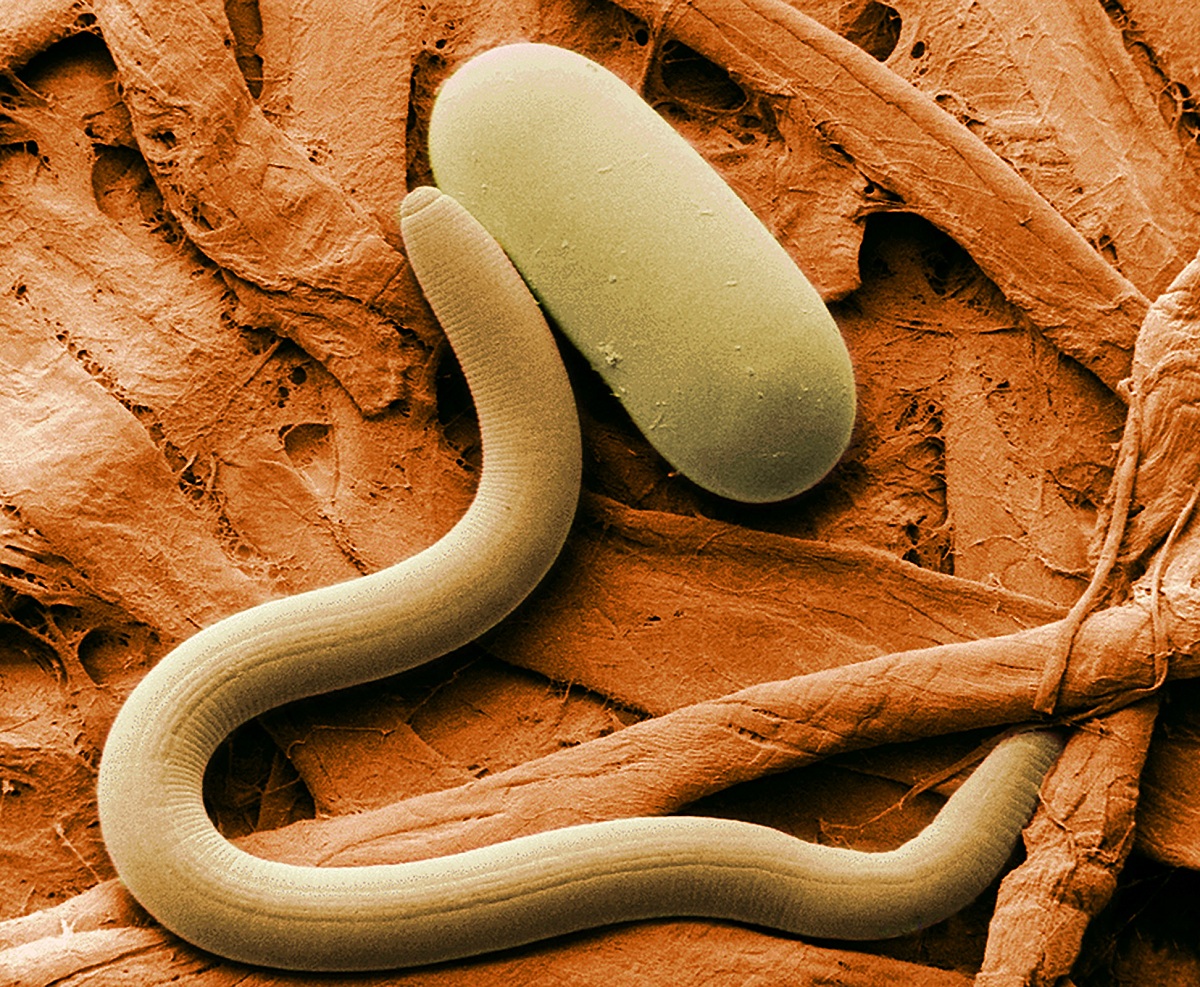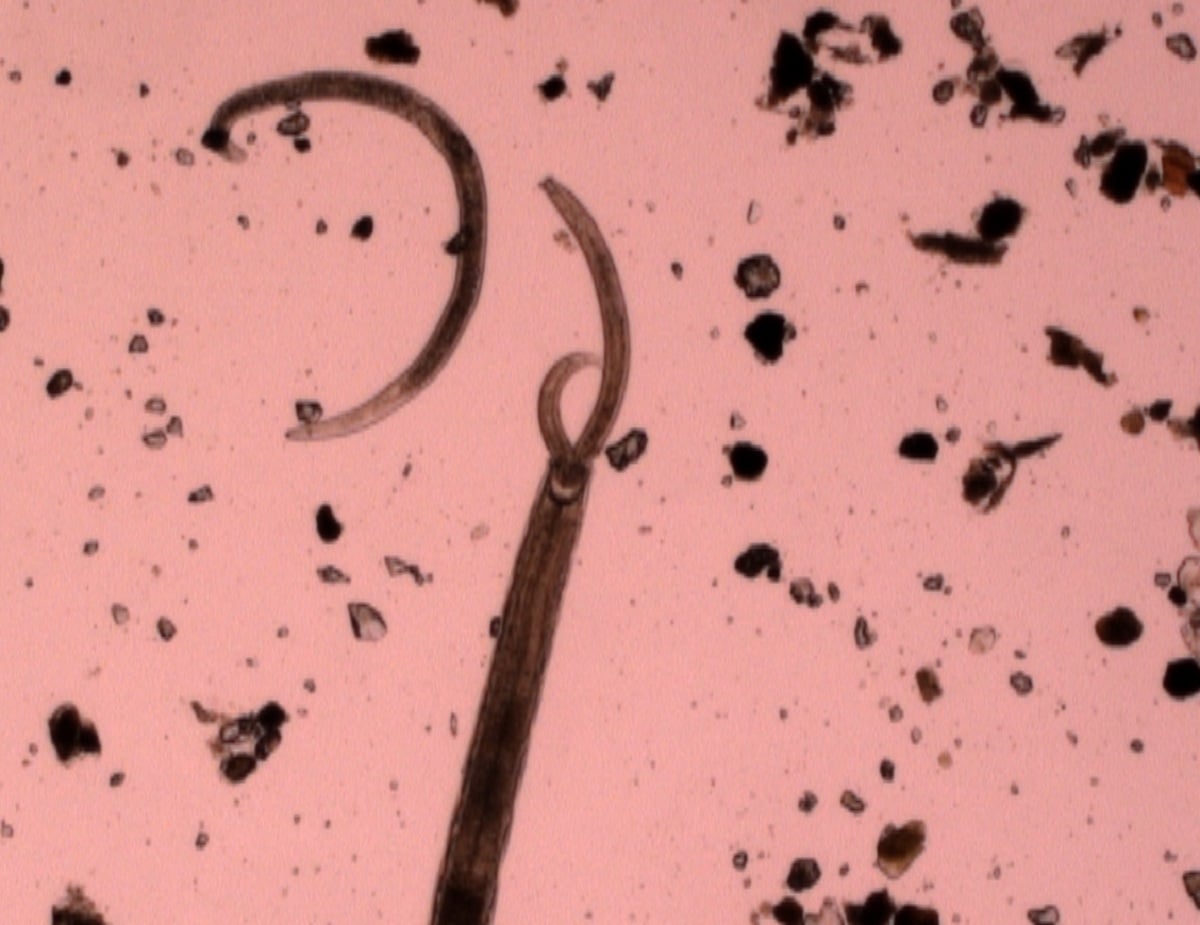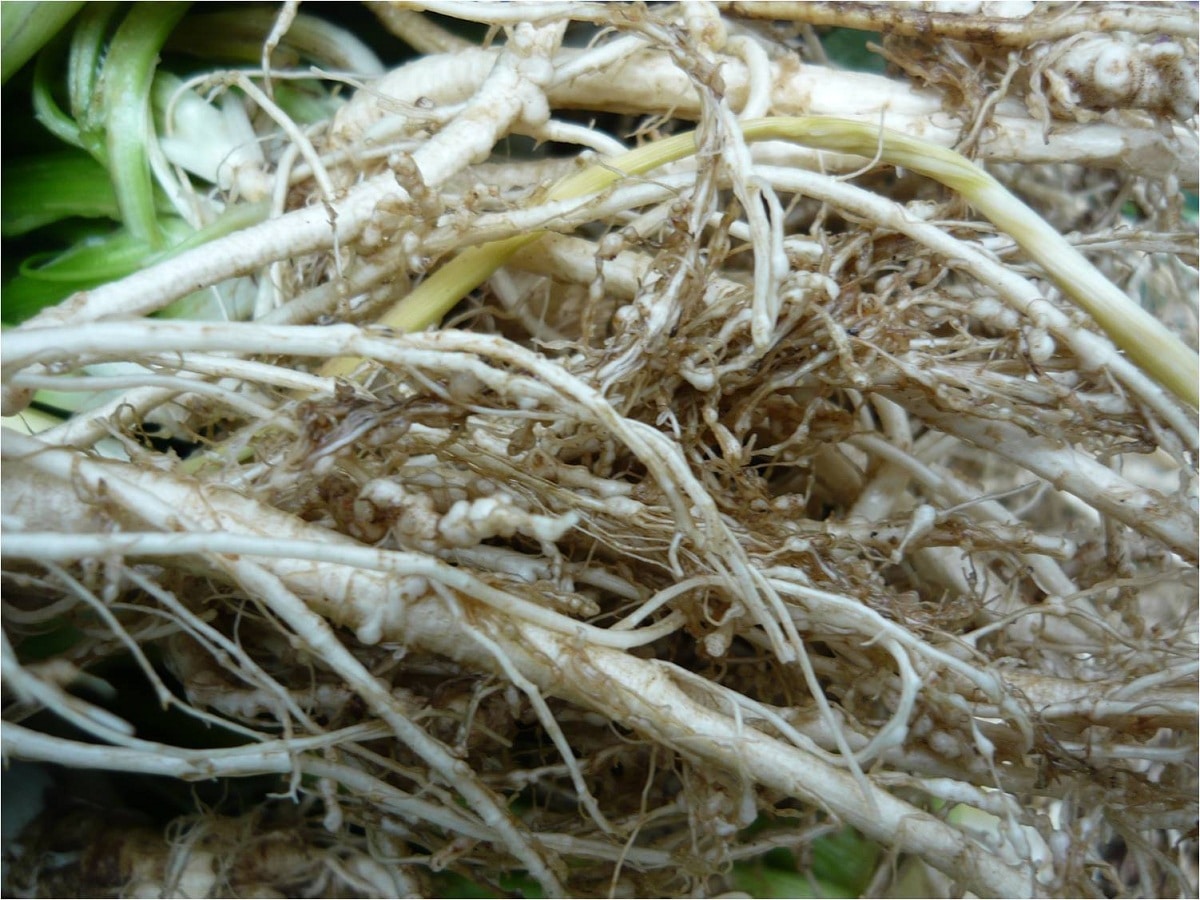
When we have crops both in the urban garden and in the gardens, our plants can be attacked by pests and diseases. Apart from the typical pests, fungi and viruses that affect our crops we also have to attend to the nematodes. They are commonly considered as small worms that are not as well known as other pests. The problem with these insects is that there are some that are beneficial, although most of them are harmful. Not everyone knows what nematodes are or what they represent in agriculture.
Therefore, we are going to dedicate this article to tell you everything you need to know about nematodes and their affection in agriculture.
What are nematodes

They are animals that belong to the group of worms. They are classified as pseudocoelomatas. To clarify a bit and have a simpler view of these animals, they can be distinguished as worms with different mobile shapes. Within the group of nematodes that attack plants and, therefore, are dangerous for our crops, we have the following:
- Endoparasites: They are those that are inside the plant and are developing inside. The eggs are also introduced inside.
- Semi-endoparasites: part of the worm stays inside the plant and another part stays outside. The bet of the eggs are made outside.
- Sedentary ectoparasites: Ectoparasites are those that only enter the head inside the plant and are only shed from it when the breeding season arrives.
- Lookout ectoparasites: they just visit the plant through the stylus. The rest of the time they go from one plant to another.
Attack on plants and visible symptoms

One of the most widespread questions of how these worms attack plants is what symptoms we can see to identify. In most cases we usually find nematodes in the soil. Its attack is carried out exclusively on the roots. As is to be expected, this is a serious problem for farmers. It is somewhat difficult to predict or prevent a nematode attack on a crop.
In order to identify the attack of a nematode towards any of our plants we must emphasize the correct visualization of the symptoms. These are as follows:
- Appearance of buds much later of the normal.
- Widespread weakening of the plant for its appearance and lack of growth.
- Poor development at the roots. This is not easily perceived by the farmer.
- Leaf spots
Once we have identified the main symptoms that crops attacked by nematodes usually have, we have to attack. Treatment for these types of animals is quite complicated. This is because a different treatment must be carried out depending on the type of species and its classification. Since they carry out their life cycle inside the plant, it is quite difficult to eliminate.
Products to eliminate nematodes
There are numerous products that are sold and are classified as nemostatics. These products will help the crop to develop even if they are always affected by these organisms. Products are sold in the market to treat these animals and are mainly divided into organic and integral type products. Some of the subjects that used in these products usually work as nematicides. Some of them are only applicable when the earth is completely bare. This means that, in order to disinfect the entire soil from the presence of nematodes, we need the soil without any type of planting.
One of the main products sold to eliminate these organisms is oxamyl. Your authorization must be checked in advance as there are many areas where its use is not allowed. It is a very useful active ingredient against certain types of nematodes. It is incorporated through drip irrigation to gradually increase its concentration. It works through a systemic action that begins from the roots to the leaves.
For those people who receive an ecological treatment to control this pest, some fungal spores are used. One of these spores comes from the fungus Paecilomyces lilacinus. These spores act on physiological states. When there are cultivated plants, sodium hypochlorite can also be used as a disinfectant for soils. The quantities of one liter per thousand square meters must be adjusted so that the crops are not damaged. If we go beyond the application and do it by drip irrigation, phytotoxicities can be generated that do not interest us.
Beneficial nematodes

As we have mentioned before, not all nematodes are harmful to our crops. There are some that are safe or even beneficial. This type of worms is included in the group of entomopathogens. They are those animals that for it is so obligatory to insects. This is where the benefits that we can obtain from these organisms come from.
It is not that they are an immediate solution for the control of some more frequent pests of crops, but there are promising studies in this regard. Some of these studies indicate that there is a proven efficacy against certain pests. This makes entomopathogens are considered as bioinsecticides for the biological control of some pests.
These animals compulsorily host insects, although it is not the nematode itself that kills the pest insect. The process much more complex. There is a nematode-bacterium symbiotic relationship in altea nematode is the vector of the bacteria that infects the insect's organism. We know as a biological vector any living being that serves as transport and can transmit any infectious agent to another organism. This makes the nematode serve as a vector to be able to transfer the bacteria that infect the insect's body and stops the spread of the pest. To apply this type of nematodes you can use traditional sprayers or even with irrigation water.
I hope that with this information you can learn more about nematodes and their importance in agriculture.